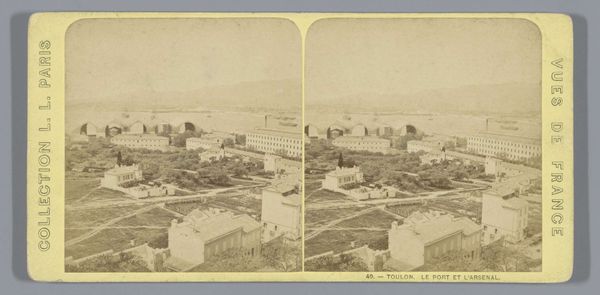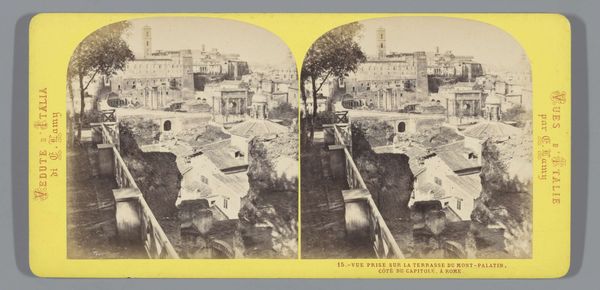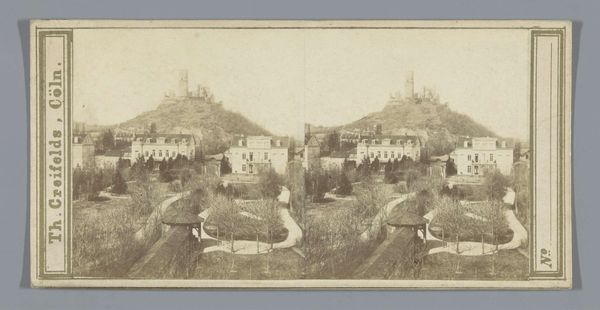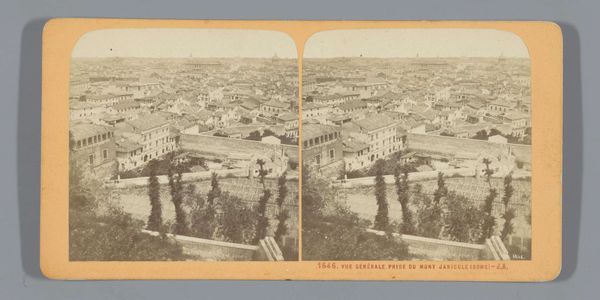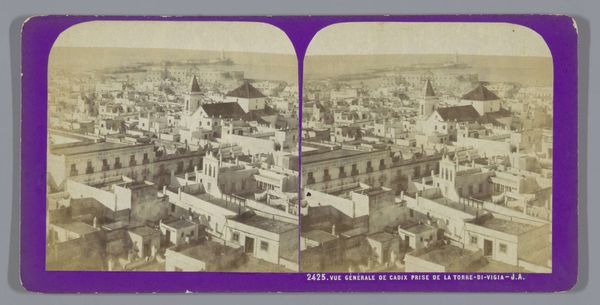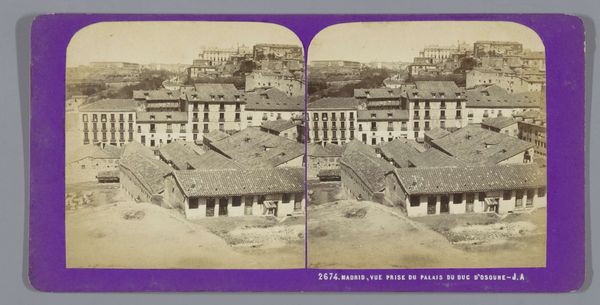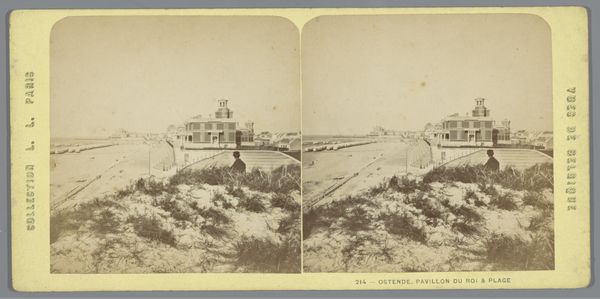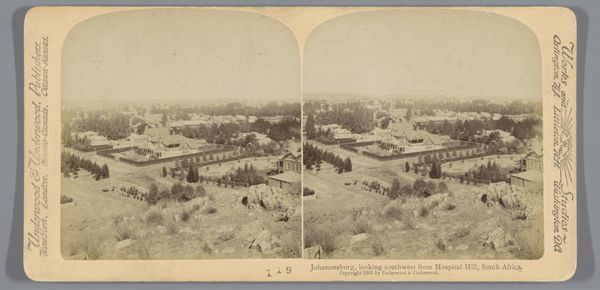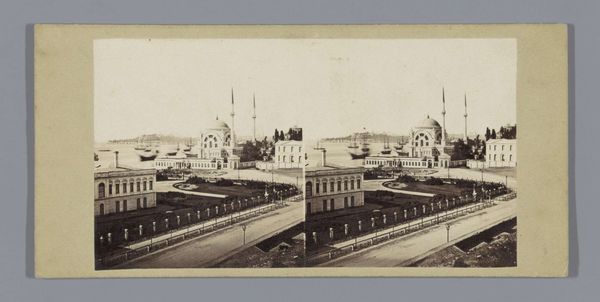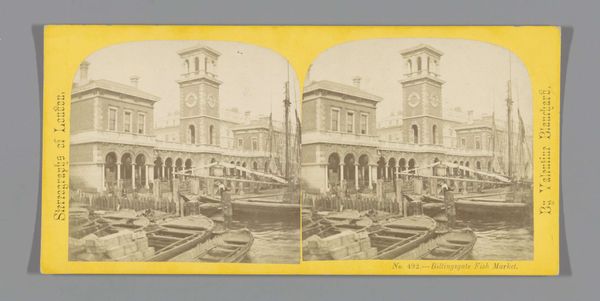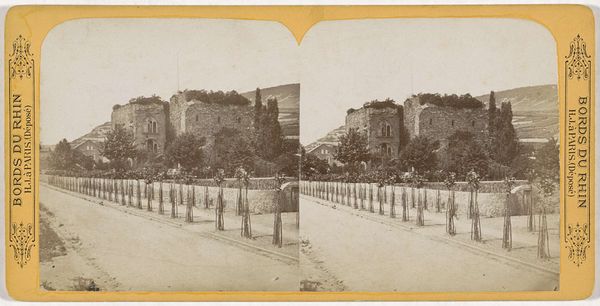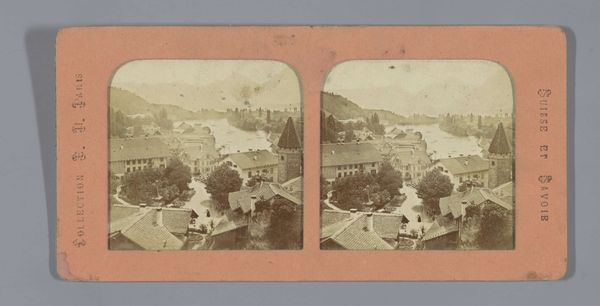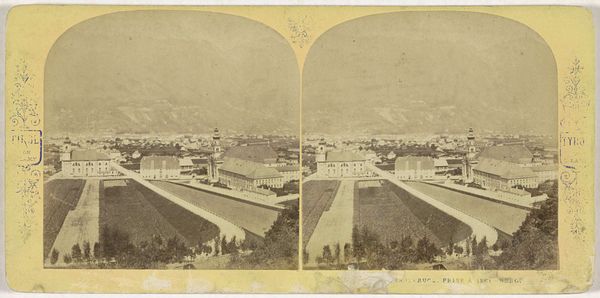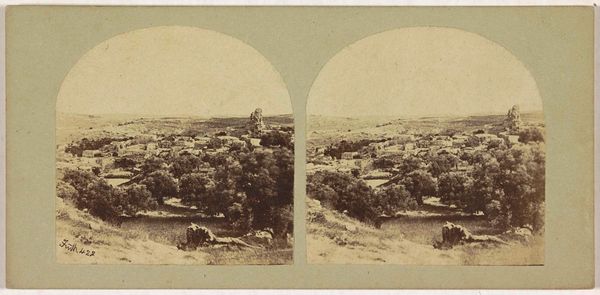
print, photography, gelatin-silver-print
# print
#
landscape
#
photography
#
photojournalism
#
orientalism
#
gelatin-silver-print
#
cityscape
Dimensions: height 87 mm, width 174 mm
Copyright: Rijks Museum: Open Domain
Curator: This photograph, a gelatin silver print, documents the "Algerian Pavilion at the Universal Exhibition of 1878." Editor: Well, right away, I feel a curious mix of serenity and... unease? The light is soft, the scene almost quaint, but knowing it’s a colonial display casts a shadow. Curator: Precisely. World's Fairs were, in many ways, showcases of imperial power, framing colonized countries as spectacles for European consumption. This image is a lens into how Algeria, specifically, was represented at that moment. We must analyze it through the critical theories about representation and power dynamics, bearing in mind how those practices legitimized colonial ideologies. Editor: I get that. It's like…look at this exotic ‘other,’ neatly packaged for our viewing pleasure. That minaret, the carefully arranged foliage—it's all staged, right? A set design for colonial fantasy? Makes you wonder about the absent voices, the stories not being told. Curator: Absolutely. The pavilion itself was designed to reflect a romanticized version of Algerian architecture and culture. What is crucial is how these visuals played a role in shaping and reinforcing public perception of Algeria. Consider the frameworks by Edward Said, and his profound analysis of how the orient has been historically "othered". This connects strongly with intersectional analyses around the power, identity and gender inherent in representations like this one. Editor: Right, like wallpaper in the European imagination. Looking at it now, it almost feels like a diorama, this tidy, controlled vista. What really hits me is the flattening of a lived, complex reality into something digestible—and profitable, no doubt. Curator: Exactly! These carefully constructed images were not neutral. They were instruments in a larger political and social narrative that upheld colonial domination. That interplay between the photographer's vision and the sociopolitical context reveals crucial truths. Editor: Thanks, seeing it through that lens definitely adds another layer. A beautiful, haunting, and problematic layer. Curator: Indeed. I trust such nuanced understanding fosters deeper reflections on both history and the persistent legacies of visual culture.
Comments
No comments
Be the first to comment and join the conversation on the ultimate creative platform.
